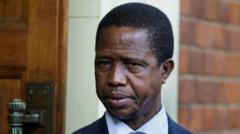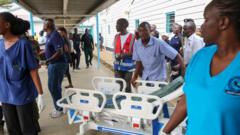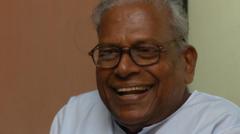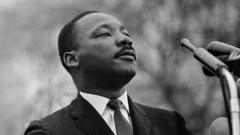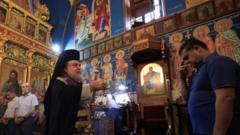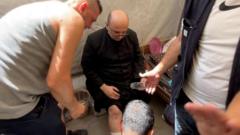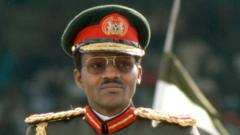In a solemn atmosphere reflecting the loss of a beloved pontiff, mourners from across the globe gathered in Vatican City to commemorate the life of Pope Francis, who passed away at the age of 88. The funeral Mass, marked by both a spirit of humility and grand traditions, took place in the iconic St. Peter’s Square, drawing dignitaries, clergy, and laity alike.
Pope Francis' Funeral: Mourners Gather in Vatican City to Pay Final Respects

Pope Francis' Funeral: Mourners Gather in Vatican City to Pay Final Respects
As the world bids farewell to the People’s Pope, thousands gather in St. Peter’s Square for a heartfelt tribute.
The ceremony commenced with preparations for an open-air Mass, welcoming royal members and heads of state among an expected crowd of over 100,000, illustrating the pope’s far-reaching influence. Displaying his preference for modesty, Francis had requested that his funeral be less extravagant, yet the centuries-old Catholic customs were observed with dignity. Notably, his straightforward burial plans, including a simple wooden coffin and a private ceremony, underscored his vision of the papacy as grounded and relatable.
The guest list featured prominent political figures from around the world, including former U.S. Presidents Trump and Biden, underscoring the geopolitical landscape in which the ceremony unfolded. Despite past criticisms from some leaders, the event became a poignant intersection of relationships and controversies associated with Francis’ renegotiation of the church's role in the world.
Security was ramped up in response to the vast crowds and international delegation, with thousands of law enforcement officers deployed throughout Rome to ensure safety amidst the gatherings. Vaticans authorities implemented extensive measures for crowd control and medical support for attendees.
As the funeral unfolded, it transformed into a profound public event celebrating the significant legacy of Pope Francis, a leader renowned for advocating for inclusivity and compassion, particularly towards marginalized communities. The sentiments echoed by attendees—the nuns clutching rosaries, teens resting on cobblestones, and activists displaying cultural icons—amplified the vibrant reverence for a pope who endeavored to unify rather than divide.
After the Mass, Francis’ body would be conveyed to the Papal Basilica of Santa Maria Maggiore, his chosen final resting place. Following a private interment, attention would shift toward the critical task of selecting his successor, with speculations rife regarding who might become the next leader of the Catholic Church.
The deeply felt loss of Francis is juxtaposed with reflections on his achievements, posing essential dialogues about the future direction of the church he so passionately led for over a decade.
As the sun set over St. Peter's Square, millions reflected on the pope's message of faith, justice, and the vital role each person plays in their communities, ensuring that his advocacy for the oppressed will resonate far beyond his time on earth.
The guest list featured prominent political figures from around the world, including former U.S. Presidents Trump and Biden, underscoring the geopolitical landscape in which the ceremony unfolded. Despite past criticisms from some leaders, the event became a poignant intersection of relationships and controversies associated with Francis’ renegotiation of the church's role in the world.
Security was ramped up in response to the vast crowds and international delegation, with thousands of law enforcement officers deployed throughout Rome to ensure safety amidst the gatherings. Vaticans authorities implemented extensive measures for crowd control and medical support for attendees.
As the funeral unfolded, it transformed into a profound public event celebrating the significant legacy of Pope Francis, a leader renowned for advocating for inclusivity and compassion, particularly towards marginalized communities. The sentiments echoed by attendees—the nuns clutching rosaries, teens resting on cobblestones, and activists displaying cultural icons—amplified the vibrant reverence for a pope who endeavored to unify rather than divide.
After the Mass, Francis’ body would be conveyed to the Papal Basilica of Santa Maria Maggiore, his chosen final resting place. Following a private interment, attention would shift toward the critical task of selecting his successor, with speculations rife regarding who might become the next leader of the Catholic Church.
The deeply felt loss of Francis is juxtaposed with reflections on his achievements, posing essential dialogues about the future direction of the church he so passionately led for over a decade.
As the sun set over St. Peter's Square, millions reflected on the pope's message of faith, justice, and the vital role each person plays in their communities, ensuring that his advocacy for the oppressed will resonate far beyond his time on earth.

